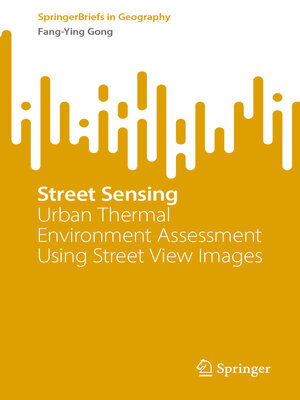Street Sensing
ebook ∣ Urban Thermal Environment Assessment Using Street View Images · SpringerBriefs in Geography
By Fang-Ying Gong

Sign up to save your library
With an OverDrive account, you can save your favorite libraries for at-a-glance information about availability. Find out more about OverDrive accounts.
Find this title in Libby, the library reading app by OverDrive.



Search for a digital library with this title
Title found at these libraries:
| Library Name | Distance |
|---|---|
| Loading... |
Combining publicly available Google Street View (GSV) images with deep learning and radiative transfer models enables researchers to assess urban physical and thermal environments, especially in high-density areas. This book introduces this advanced approach, which provides large-scale, high-accuracy, and high-density measurements of street-level urban features—key to understanding urban radiation balance and thermal dynamics.
By leveraging GSV images, this method directly characterizes urban streetscapes, including structural and geometric attributes, allowing for a comprehensive assessment. Moreover, the methods can be applied to any geographical location covered by GSV, making it a low-cost and effective tool for urban studies globally. This is particularly advantageous compared to traditional 3D-GIS models, which may not always be freely available or as extensive in coverage as GSV images.
Lessons from Street Sensing provide data-driven insights for urban planning and governance. The accurate mapping of street view factors and solar irradiance helps identify areas with insufficient greenery, excessive or insufficient solar exposure, and other urban environment issues. These insights can help policymakers and urban planners mitigate negative environmental impacts and improve urban living conditions.







